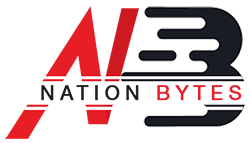IMF and Pakistan Consider Lower GDP Growth Target After Flood Devastation
Pakistan and the IMF are revising the GDP target to 3.5% as floods disrupt growth, raise inflation, and strain foreign reserves.

Pakistan and the International Monetary Fund (IMF) are holding advanced discussions to revise the country’s GDP growth target for the current fiscal year. The move follows widespread economic disruption caused by the recent floods that damaged infrastructure, destroyed crops, and displaced thousands of people.
The government had initially projected a 4.2 percent growth rate, but that target is now being reassessed. According to officials familiar with the talks, both sides believe a more realistic estimate will likely be around 3.5 percent, reflecting the serious impact of the floods on key economic sectors.
Economic Pressures Mount
The IMF’s review mission, currently in Islamabad, is working closely with Pakistan’s economic team to update the macroeconomic framework. The discussions aim to understand how the floods have affected growth, inflation, tax revenue, and foreign financing needs.
Early projections suggest a challenging path ahead:
-
Inflation: Expected to remain around 7 to 8 percent, keeping living costs high.
-
Foreign Reserves: Could decline to about $14.5 billion, reducing import capacity.
-
Current Account Deficit: May widen to nearly $1.5 billion, adding pressure on the external sector.
-
Exports and Imports: Exports are expected to reach $33 billion, while imports may cross $60 billion, maintaining a wide trade gap.
-
Remittances: Forecasted at $36 billion, providing some relief to the external account.
Overall, the data signals an economy struggling with high inflation, limited fiscal space, and slower growth momentum.
Policy Reforms Under Discussion
The IMF is urging Pakistan to continue key reforms aimed at stabilizing public finances. These include expanding the tax base, cutting back on energy subsidies, and improving governance in state owned enterprises.
A senior Finance Ministry official told NationBytes.pk that revising the growth target is not a setback but “a realistic and responsible adjustment” in line with economic realities.
Experts also emphasize the need to incorporate climate resilience into future economic planning. Economist Dr. Saima Ahmed noted, “Pakistan’s economic recovery depends on how well it addresses climate risks and builds long-term protection against disasters.”
Challenges Ahead
The government faces a tough balancing act. With inflation already elevated and reserves under pressure, there is little room for aggressive stimulus measures. However, cutting development spending too sharply could slow recovery in flood-hit regions and increase hardship for vulnerable communities.
A lower growth rate also complicates the fiscal outlook. Reduced economic activity tends to lower tax revenues, forcing the government to choose between higher taxes, additional borrowing, or budget cuts each carrying political and economic risks.
The IMF program remains crucial for maintaining financial stability. Continued cooperation with the Fund could unlock additional financing from global partners such as the World Bank and Asian Development Bank.
The Road Ahead
Pakistan’s revised outlook reflects both the immediate impact of the floods and deeper structural weaknesses, including a narrow tax base and heavy reliance on imports.
Going forward, the government’s credibility will depend on its ability to deliver promised reforms while supporting low-income households and rebuilding damaged infrastructure.
While the updated GDP target of around 3.5 percent may appear conservative, it offers a more achievable and credible foundation for recovery. If managed effectively, it could help restore investor confidence and strengthen Pakistan’s path toward sustainable growth.
For more updates, visit Nation bytes

 Israr Ahmed
Israr Ahmed